The Classic Appeal of the Two Horn Anvil
Abana Chapter
February 12, 2024
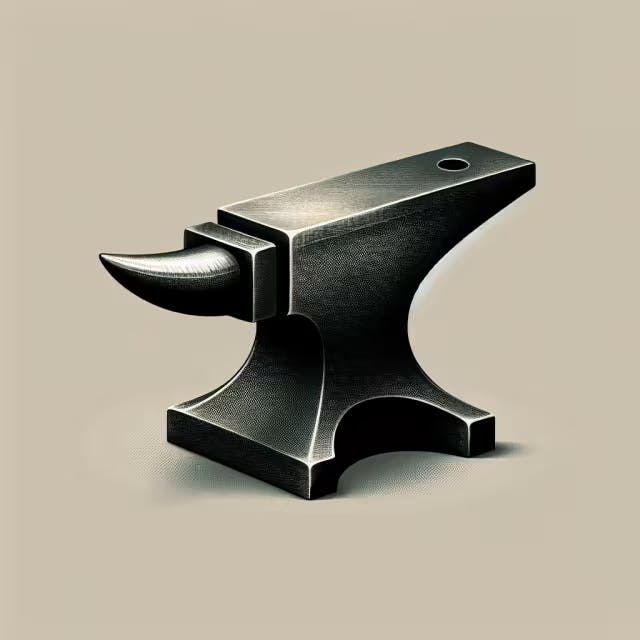
For centuries, the classic appeal of the two horn anvil has been the cornerstone of workmanship in metalworks, shaping the functionality and precision of blacksmithing across history. This iconic tool, revered for its durability and versatility, remains a must-have for artisans and hobbyists alike, standing as a testament to the timeless craft of metal forging. Whether you're an experienced blacksmith or a curious beginner, understanding the enduring allure and practical applications of the two horn anvil is essential for anyone looking to delve into the art of shaping metal.
Key Takeaways
The two horn anvil has a storied history and remains a crucial tool in metalworks for its durability and functionality.
It is considered essential equipment for blacksmiths and metal artisans, catering to both professionals and hobbyists.
The design of the two horn anvil offers versatile applications, accommodating a wide range of metal forming techniques.
Selecting the appropriate two horn anvil for your specific forging needs is critical to achieving the desired craftsmanship.
Regular maintenance and care of the two horn anvil can significantly extend its lifespan and ensure consistent performance.
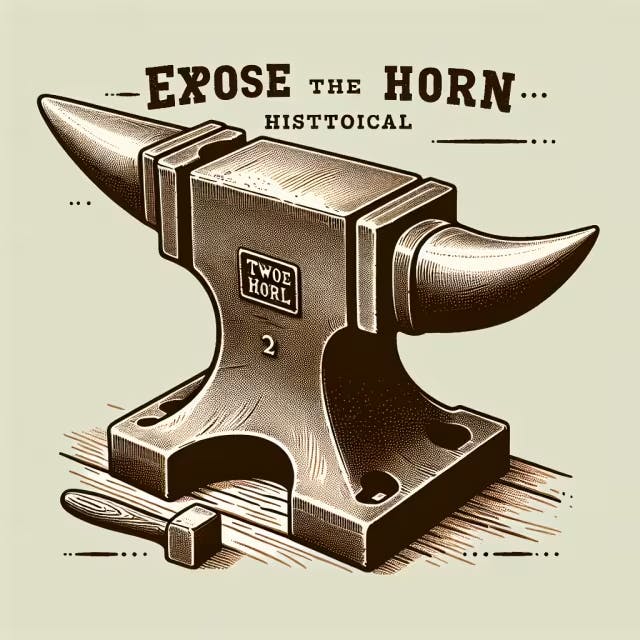
Exploring the History of the Two Horn Anvil
The two horn anvil, a symbol of craftsmanship and durability, has roots stretching deep into history. Originating from the blacksmiths of Europe, this anvil design has been a cornerstone in metalworking for centuries. Its design, featuring a flat surface punctuated by two distinct horns, allows for a variety of metal shaping techniques, making it indispensable in a blacksmith's toolkit.
Versatility: The round horn is perfect for bending and shaping metal, while the flat horn provides an ideal surface for straightening and flattening pieces.
Durability: Forged from high-grade steel, these anvils were built to withstand the test of time and the constant hammering of metalwork.
The classic appeal of the two horn anvil lies not only in its functionality but also in its historical significance. It has been a silent witness to the evolution of metalwork, from the creation of medieval armor to the intricate ironworks of the Victorian era. As a tool that has shaped the course of history, its legacy continues to endure in workshops around the world.
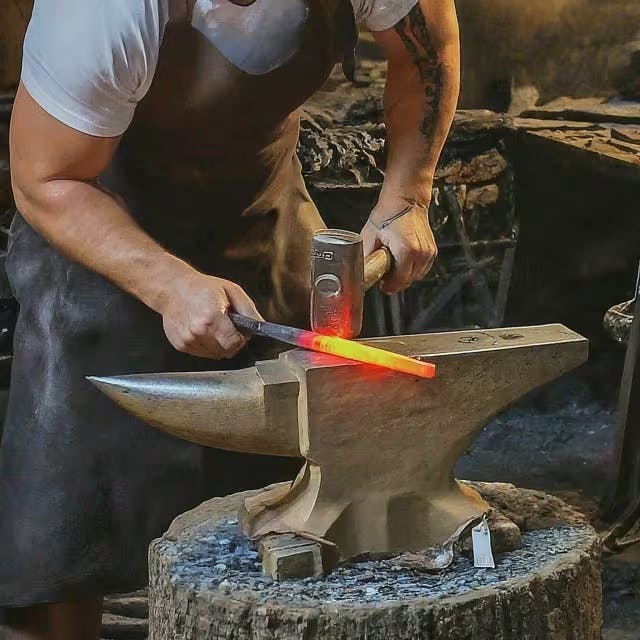
Why the Two Horn Anvil is a Must-Have for Blacksmiths
The two-horn anvil holds a place of distinction in many blacksmiths' workshops for its versatility and classic design. Ideal for a wide variety of blacksmithing tasks, this anvil provides both a flat surface for hammering and rounded horns for shaping and bending metal.
Key Features:
Flat Work Surface: Ideal for straightening and pounding out metal pieces.
Rounded Horn: Allows for efficient bending and shaping of metal.
Squared Horn: Offers additional functionality for specific shaping needs.
This anvil's design makes it a valuable tool for smiths of all levels, from beginners practicing their craft to seasoned professionals working on intricate pieces. The combination of a flat work surface and dual horns amplify its utility, facilitating a broad spectrum of metalworking projects. Whether it’s creating custom jewelry, hardware, or artistic metalwork, the two-horn anvil provides the functionality required for precise, high-quality craftsmanship.
Durability is another hallmark of the two-horn anvil, crafted from high-grade materials to withstand the rigors of metalworking. Its robust construction ensures a long service life, making it a worthwhile investment for any blacksmith.
In essence, the two-horn anvil is not just a tool but a cornerstone of the blacksmithing trade, embodying both tradition and utility. Its enduring appeal lies in its adaptability, empowering artists and craftsmen to bring their visions to life with precision and finesse.
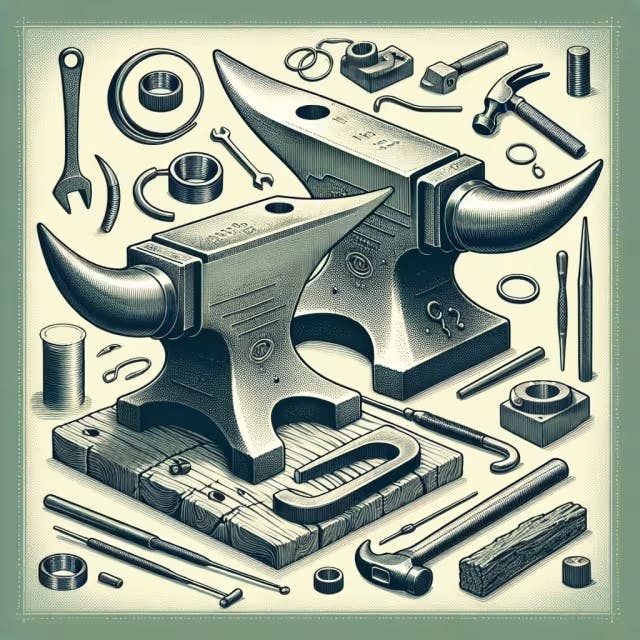
The Versatile Functions of Two Horn Anvils
The two-horn anvil stands out for its multifaceted functionality, designed to cater to a wide array of metalworking needs. The primary horn, often rounded, aids in the bending and shaping of metal, whereas the secondary, square horn is perfect for angular projects. The central work surface, known for its durability and resilience against dents, is crucial for general metalwork. Essential features like the hardy hole contribute to the anvil's versatility, allowing for the use of various tools. Cast steel anvils, particularly popular in North America, ensure a long-lasting working surface. For those seeking quality and durability in their metalworking tools, VEVOR offers a selection of premium anvils, ensuring both hobbyists and professionals find exactly what they need for their projects.
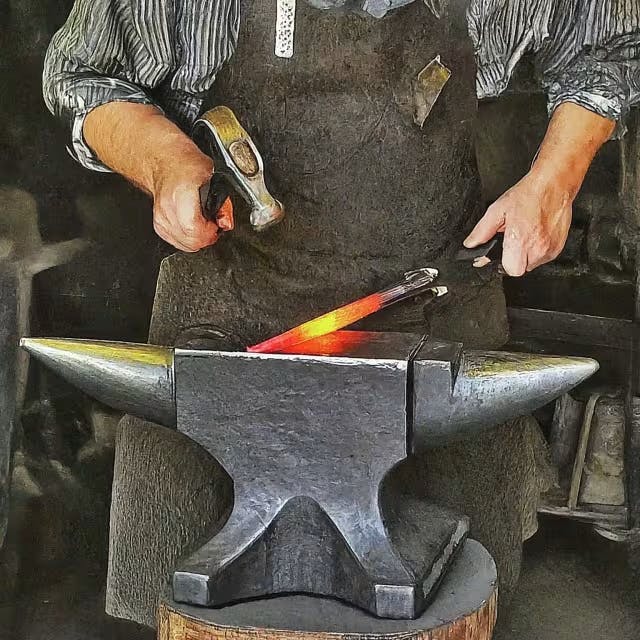
Choosing the Right Two Horn Anvil for Your Forge
When diving into the world of blacksmithing, selecting a two-horn anvil that meets both your practical needs and budgetary constraints is vital. According to Dan's insights on choosing the best anvil, focusing on quality and functionality over aesthetics is crucial. This advice aligns with the requirements for effective silver forging as discussed in anvil recommendations on Ganoksin, where the utility of the anvil's surface and support structure takes precedence.
Key Considerations:
Material: Avoid cast iron anvils due to their poor durability. Look for anvils made of tool steel or with a hardened face for the best rebound and longevity.
Features: Ensure the anvil has a Hardie Hole and a Pritchel Hole. These features increase the versatility of your anvil, allowing for a wider variety of blacksmithing techniques.
Weight: The subject of anvil weight is significant. For most hobbyists, a mid-range weight between 35 lb and 70 lb is manageable and efficient, but this largely depends on the specific projects you'll be tackling.
Alternatives and Creative Solutions:
For those on a tighter budget or with spatial constraints, alternative solutions can still provide an effective forging experience:
Railroad Track Pieces: While traditionally not the first choice, properly surfaced sections of railroad tracks can function adequately for many projects.
Stump or Box Support: Instead of traditional stands, consider using a dense wooden stump or a sturdy box filled with sand or constructed from 2x6 lumber. These can offer stable and cost-effective support for your anvil.
Creative Setups: Unconventional setups, like adapting a Rubbermaid stool with 4x4 supports for the anvil, showcase the ingenuity within the blacksmithing community and present viable options for those dealing with space and budget restrictions.
Remember, the decision on which two-horn anvil to invest in should not only be guided by immediate needs but also by considering long-term use and versatility. Whether you're setting up a forge at home or looking to add to your existing workshop, the classic appeal of the two-horn anvil remains unmatched, provided it aligns with the standards of quality and functionality outlined above.
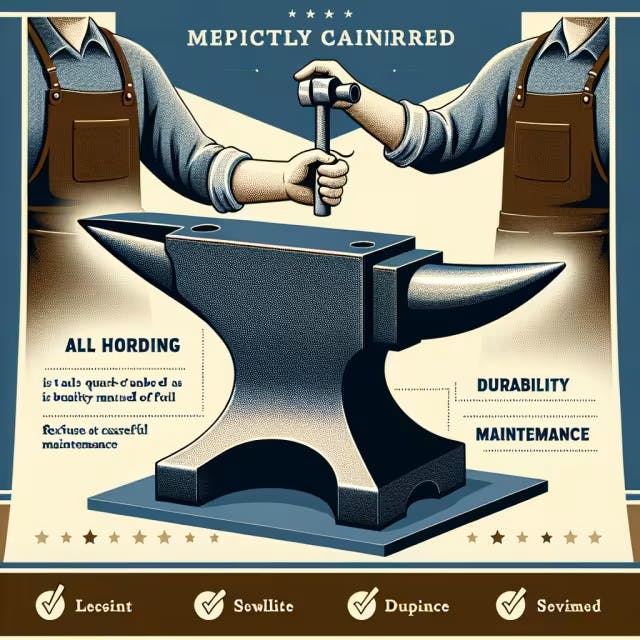
Maximizing Durability: Care Tips for Your Two Horn Anvil
To ensure your two horn anvil remains a cornerstone of your workshop for years to come, regular maintenance and careful handling are key. Here's a straightforward guide to keep your anvil in top condition:
Keep it Clean: Wipe away any debris or moisture after each use. This prevents rust and maintains the anvil's surface integrity.
Avoid Unnecessary Strikes: Use the anvil's surface judiciously. Striking it with non-workpiece materials or at incorrect angles can lead to chips or cracks.
Rust Prevention: Apply a light coat of oil periodically. This wards off rust, especially in humid environments.
Regular Inspection: Check for signs of wear or damage. Early detection can prevent small issues from becoming big problems.
Proper Positioning: Ensure your anvil is mounted securely. A stable base reduces wear and improves safety during use.
Following these simple steps, your two horn anvil can stand the test of time, embodying the classic appeal of traditional metalworking. For more detailed guidance on selecting and maintaining tools that add complexity and precision to your work, consider insights from experts like those at Crate Entertainment. Their deep dive into crafting strategies and tool optimization offers analogous wisdom for the meticulous care of a blacksmith's anvil. The classic appeal of the two-horn anvil, underscored by its unrivaled utility and enduring craftsmanship, embodies the heart of traditional blacksmithing while meeting the demands of modern metalworking. Its time-tested design, enriched by centuries of metallurgical innovation, ensures that it remains an indispensable asset in any forge, encapsulating a perfect blend of form, function, and durability. By choosing the right two-horn anvil and adhering to essential care tips, blacksmiths can continue to forge metal masterpieces for generations to come, preserving the rich legacy of metal craft.
Frequently Asked Questions
What is the classic appeal of the two-horn anvil in metalworking?
The classic appeal of the two-horn anvil in metalworking lies in its versatility, durability, and historical significance. With a design that features a flat work surface for straightening and pounding out metal pieces, alongside rounded and squared horns for bending, shaping, and specific angular work, it caters to a broad spectrum of blacksmithing and metalworking projects. Its resilience and robust construction ensure it withstands the constant hammering and rigors of metalworking, making it a vital tool for both novices and seasoned professionals. Moreover, the anvil's legacy as a cornerstone in the evolution of metalwork, from medieval armor to Victorian ironworks, adds to its allure, serving not just as a tool, but as a symbol of craftsmanship through ages.
Why is the two-horn anvil considered versatile for blacksmiths?
The two-horn anvil is revered among blacksmiths due to its versatility, arising from its dual-horn design complemented by a robust, flat working surface. The rounded horn facilitates the bending and shaping of metal, while the square horn caters to angular work, enhancing the tool's adaptability for various projects. Additionally, features such as the Hardy Hole expand its utility, enabling the use of supplementary tools. The anvil's construction from high-grade materials ensures durability and a long service life, crucial for the demanding nature of metalworking. This combination of functional diversity and resilience makes the two-horn anvil a fundamental asset in the blacksmith's arsenal, suited for everything from basic tasks to complex craftsmanship.
How does the design of a two-horn anvil contribute to its durability?
The design of a two-horn anvil significantly contributes to its durability through its robust construction and material choice, typically high-grade steel, engineered to endure the high-impact nature of metalworking. The inclusion of two horns, one rounded for bending and shaping and another, often square, for angular work, alongside a resilient flat work surface, ensures a multi-functional tool that can handle a variety of tasks without succumbing to damage. Regular maintenance, including cleaning and rust prevention, alongside the use of the anvil's features (Hardie Hole and Pritchel Hole) for their intended purposes, further extends its durability. This fusion of thoughtful design, quality materials, and proper care ensures the two-horn anvil remains a lasting fixture in workshops, supporting a wide range of blacksmithing projects with reliability.
What are the key considerations when selecting a two-horn anvil for your workshop?
When selecting a two-horn anvil for your workshop, prioritize materials and construction for durability, with tool steel or hardened steel being preferable over cast iron. It’s essential to choose an anvil that features a Hardie Hole and a Pritchel Hole for versatility in blacksmithing techniques. Weight is also a critical factor, with a mid-range weight of 35 lb to 70 lb being suitable for most hobbyists, depending on the specific projects you plan to undertake. Alternatives for those on a budget include using railroad track pieces or creating a sturdy support from a wooden stump or a heavy-duty box. Moreover, ensure regular maintenance, including keeping the anvil clean, preventing rust with light oil application, and mounting it securely to minimize wear and ensure safety.
How can you maintain your two-horn anvil to ensure its longevity?
To maintain the longevity of your two-horn anvil, follow these essential practices:
Clean Regularly: Ensure the anvil is free from debris and moisture after use to prevent rust and maintain the integrity of the anvil's surface.
Use Wisely: Avoid striking the anvil with non-workpiece materials and ensure strikes are at appropriate angles to prevent chipping or cracking.
Rust Prevention: Apply a thin layer of oil periodically to protect against rust, a crucial step especially in areas with high humidity.
Inspect Often: Regularly check your anvil for any signs of wear or damage. Early detection can prevent minor issues from escalating.
Ensure Stability: Make sure the anvil is securely mounted on a stable base. This not only reduces wear on the anvil but also enhances safety during its use.
Adhering to these guidelines will help ensure your two-horn anvil remains a durable and dependable tool in your metalworking projects.


